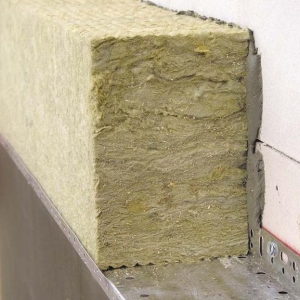If you are high-qualityly insulated a wooden house, but forgot about the heat insulation of the ceiling, your work will go to the pump. As you know, warm air tends to up and safely leaves the room, and if the ceiling is made to sleep, you cannot avoid large heat loss through the roof. Together with this, the moisture rises and condenses on the surfaces and causing the development of fungus and rot. Let's prevent these troubles and warm the wooden ceiling.
You can warm the ceiling in a wooden house from above from the attic room and the bottom of the ceiling, that is, from within the room. First, we will stop more in the first way. This method is perfectly suitable when there is access to the attic or indoors where it is necessary to insulate the ceiling, the repair has already been made. In addition, thermal insulation is much simpler, as there is no need to work with raised hands up. In the case of the arrangement of the summer attic, the best thermal insulation material will be the foam, because it gives the floor additional rigidity. Clean the surface from garbage and dust and put a vapor insulation material on the boarded floor - pergamine. Make lags that must have the same thickness as foam. The lag installation step must be 50 cm for heater half-meter width. After mounting the foam, lay the sheets of plywood or OSP from above.
- Clean the surface from garbage, check for the presence of protruding nails, which are able to damage the vapor barrier material.
- Place the film, for example, pergamine, on which mineral wool is located. The layer can be done thinner than when using sawdust. When installing the gaps must remain minimal.
- Remember that it is impossible to finish and compact mineral wool! With a large density, the thermal insulating qualities of this material deteriorate.
- Cover the insulation from above vapor barrier to protect it from dampness and dust.
- If you plan to move in an attic room after the warming of the overlap, it is recommended to lay the board on top. Also, you can also use shields for this purpose. At the same time, it is desirable not to describe the material on the heat insulation so that the insulation does not compress.
- Treat wooden overlap with protective makeup to prevent its destruction under the influence of fungus and mold. Place a polyethylene film on the insulation right on the boarding floor so that it does not fall on the head. In addition, it will perform the role of vapor barrier.
- Sawdust or clamzit is allowed as a thermalizeding material. Or you can turn to the old Dedovsky method - to put the hay or straw, this is the cheapest raw material, but with this enough quality.
- The sawmill layer of sawdust should be about 20 cm.
- Choosing sawdust, make sure that their age amounted to at least 1 year. They should be dry, without mold smell.
- Next, it is necessary to knead the cement-sidelines, it must purchase gray color.
- Place it in the space of interpostral overlap.
- To catch the backfill, you can like it. When the layer is grabbed, it will make a gentle crunch.

- Before work, it is necessary to prepare a ceiling surface: if there are cracks, blow them with the mounting foam, in the case of the existence of wide gaps, lawball and blend them.
- The first layer of thermal insulation cake stands for vaporizolation. For fastening pergamine, we use titanium glue, BF-88, which should be missed the material in several places. When installing pair insulation bands, make a total of 5 cm.
- From above it is necessary to fill the mounting rail, which should pass directly through vaporizolation. You can mount the rails with a lattice, and you can arrange them in parallel, withstanding the interval between them in 40-50 cm. The thickness of the rivers should coincide with the heater thickness.
- At the next stage, we are engaged in the fastening of the heat insulating material. Insert the plates of mineral wool between the plates. They can be fixed with a thin rope, attaching it to cloves, which are pre-ripped from the side of the rails.
- After installation of the heat-insulating material, the second layer of vapor barrier is stacked. The attachment procedure to the rake is similar to laying the first layer. If Pergamine is somewhere provisted, it should not worry, since these deformations will be corrected in the process of creating a clean ceiling.
- At the final stage, we lick the surface of the PCW panels, a rush ceiling or plasterboard. That is, we use any material that involves fastening on the frame base.
In addition, for the insulation of a wooden ceiling, an eco-water or foam can be applied from the inside, it all depends on your preferences.

If the climate in the region of your stay is warm and soft, you can use a thin material like insulation for a wooden ceiling, which is sewn on top of the clapboard, or foam ceiling tiles, which acts as a good insulation.































